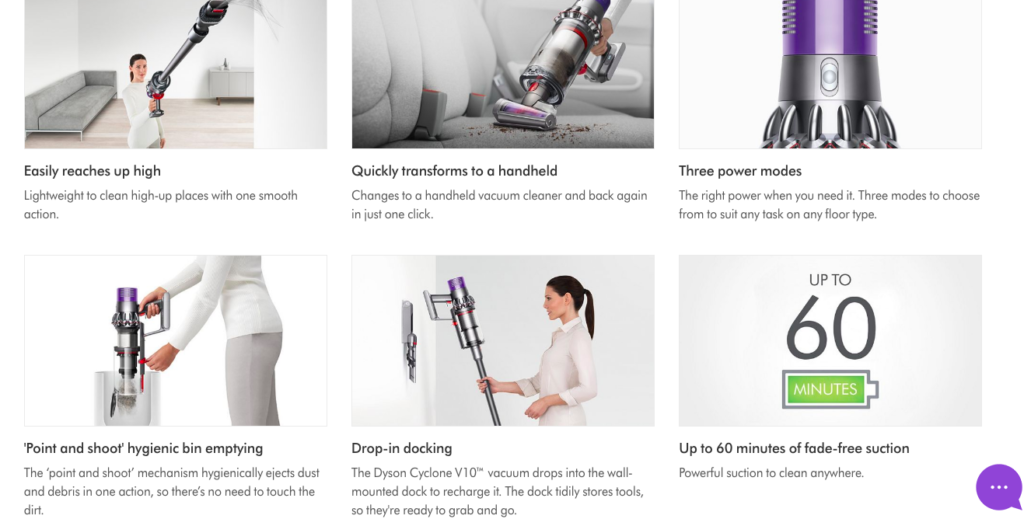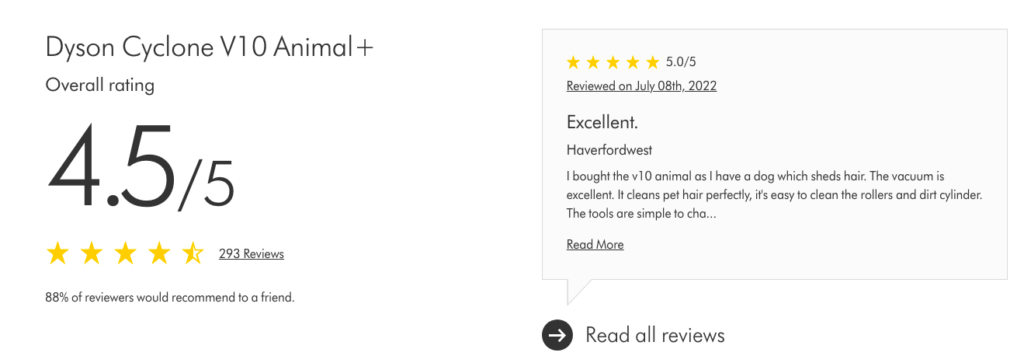Writing product descriptions is an important aspect for any ecommerce owner. It takes time, effort and little practice to create descriptions.
But a lot of people miss their importance of them. They can compel your customer to purchase and ultimately increase your sales.
We’ll give you 5 techniques and a template to craft your own product descriptions. Let’s get started.

What is a product description?
Product descriptions are the copy that explains what the product is and any key features it can offer the purchaser. The primary purpose of the product description is to give the potential buyer enough information to want to purchase the product.
Product descriptions do matter. A study found that 20% of missed purchases are due to a lack of product information.
Even consider this for yourself, do you look at the product description? Most people would say yes. After all, you can’t fully base a buying decision on the product image or name.
You’re looking for the benefits, size, colour, reviews, and any other useful information
5 techniques for writing product descriptions
Some of the online stores in the ecommerce space make the mistake of just writing product descriptions with no thought involved.
They write down a bland idea and add a few elements about their product. But this causes a few key issues.
It doesn’t give the reader compelling reasons to purchase. It also doesn’t separate the product from a competitor.
In writing a good product description it’s important to have a well-thought-out description that meets the needs of your reader and makes you the obvious choice against your competitor.
- Who is your target audience
- Benefits, not features
- No bland phrases
- Build trust
- Make it scannable
- Bonus KPI & Goals
Who is your target audience?
A target audience is a group of people that are the best candidates to buy your product. You need to be able to put yourself in the audience’s shoes and ask yourself what are they looking to read.
A misconception about a target audience is that you won’t be able to reach enough people.
You have a much better chance of converting your target audience compared to a general audience.
If you’re selling vegan products. You can create your product description to speak directly to vegans. Now, does this separate you from non-vegans, yes! But it doesn’t matter.
You are better off writing a description for vegans than writing a general description for everyone.
When you market to everyone, you are really marketing to no one. There’s no key information that speaks to a specific target.
Let’s look at a product description example.
The Dyson Cyclone V10 Animal+ does a fantastic job of speaking to its target audience. The V10 Animal+ clearly indicates it’s for pet owners throughout the product description.
Their “in-the-box” feature speaks to a lot of pet owners directly. The motobar cleaner head and hair screw tool speak directly to their target audience.
Anyone that has a pet with long hair knows it’s a hassle to deal with hair. It gets tangled in your current vacuum and it can sometimes not even be affected by the vacuuming.
Putting these two features immediately upfront is already catching the interest of pet owners.

Benefits, not features
A good product description talks about benefits first.
If we’re selling our own products, we know every intricate detail about it from the size, colour, how it’s made and anything else about the product, but all of this information doesn’t tell the reader why they should buy the product.
The benefits in your product description should give real reasons why someone should buy your product.
Your customer wants to know the existing things about this product and what they can expect to gain from purchasing it.
It’s not that product features aren’t important, and there is a place for them in your description, but features don’t create excitement behind a product.
Customers will usually look at features after they’ve made the decision to buy.
Let’s look at a product description example.
Continuing with our Dyson Cyclone V10 Animal+ if we continue down the page we come to the key benefit it highlights. Some of the benefits are lightweight, long charging time and hygienic bin emptying.
Now, it doesn’t tell us how or why they added each of these features, but it gives us the benefits of it. Each of these benefits are providing a specific impact on what the user can expect from using this vacuum.

No bland phrases
“It’s an excellent product” or “the best product on the market” – we like to call these bland phrases and they have no place in a product description.
Why? They don’t tell the reader anything. They don’t bring value.
Every business owner thinks their product is an excellent product, but that doesn’t give a reader a reason to buy it.
It becomes a less persuasive product description when we hear these bland phrases because we’re so accustomed to hearing them ourselves.
Instead of using these bland phrases use phrases that relate to your product and highlight why it’s an excellent product or is the best on the market.
Build trust
Any new product we see, we don’t exactly know if it’s going to hit all the promises it made to us – this is where building trust comes in. Trust can be seen in a few different ways but the main one is social proof.
This could be comments, reviews, or testimonials from your customers. But adding social proof can be the chicken or the egg situation. What comes first?
Getting social proof doesn’t have to be hard. You could offer your product for free to a few select people in exchange for using their responses.
You could also take to a trade show or exhibit and have people view the product in person with you and get their response after.
Building trust is a valuable tool for making your ideal customer say yes, to purchasing. It gives them confidence that the product will work and they sympathize with customers that have left a good review.
Let’s look at a product description example.
Again, let’s continue with our Dyson Cyclone V10 Animal+. Dyson does a great job of adding social proof throughout their description.
The first headline has a rating and reviews underneath to clearly indicate the number of people that have used and liked the vacuum.
If you continue down to the next block there is a full part of social proof with a rating and more reviews again. Bonus point here as well because the review directly relates to the target audience.
Having the social proof immediately shown in the product description is already building trust with the reader.

Make it scannable
Product description writing doesn’t have to be a certain length, it can be as long as it needs to be, as long as you’re continuing to provide valuable information, but this doesn’t mean everyone is going to read every line.
Making it scannable can ensure readers will be able to pick up key information points like the benefits or social proof. Even take blog articles for example.
Marketers and writers have found that a lot of people don’t read every line, so what do they do? They have easy information to pick up that can either entice the reader to keep reading or gain a general point of information.
Here are ways to make it scannable:
- Headlines
- Bullet points
- Font size
- White space
Bonus KPI & Goals
Our last technique for product descriptions isn’t necessarily a technique but it can still yield some great results. Setting up KPIs and goals with your product description needs to be added in.
If you don’t know how your current or new product description is working it can cause issues.
Testing with different product descriptions can ensure you have the best descriptions on your website for customers.
Aside from potentially seeing what product descriptions improve sales, you can also learn what is attracting your audience and use these technical details.
This will ultimately help you create the next product description faster and still yield great results.

Step-by-step writing for product descriptions
If you don’t know where to start for your product descriptions. It’s best to start gathering everything you need without even thinking about writing.
Before you begin: Write down the benefits, social proof, target audience and any other information that may be useful. After gathering the information you need it’s time to start.
Step 1: Create a headline that hooks your audience – A lot of copy experts say to write this last, if that works for you, go for it!
Step 2: Write a short description highlighting a key benefit of your product – Most of the time this is a short paragraph, but it could be bullet points as well.
Step 3: Write down all the benefits of your product – There doesn’t have to be a certain amount, as long as they relate to your product.
Step 4: Other details of your product – This is where you can add in all the features and other useful information about your product.
Step 5: Social proof – Whether it’s reviews, ratings, or testimonials now is the time to add it in.
Step 6: Create a call to action – Now, it’s time to direct your audience to the buy now button.
These 6 steps can help you create your product description from start to finish.It may take some time to craft the best one, but you’ll get there.
You’ll now be able to create better descriptions to showcase your product better and ultimately increase product sales.

